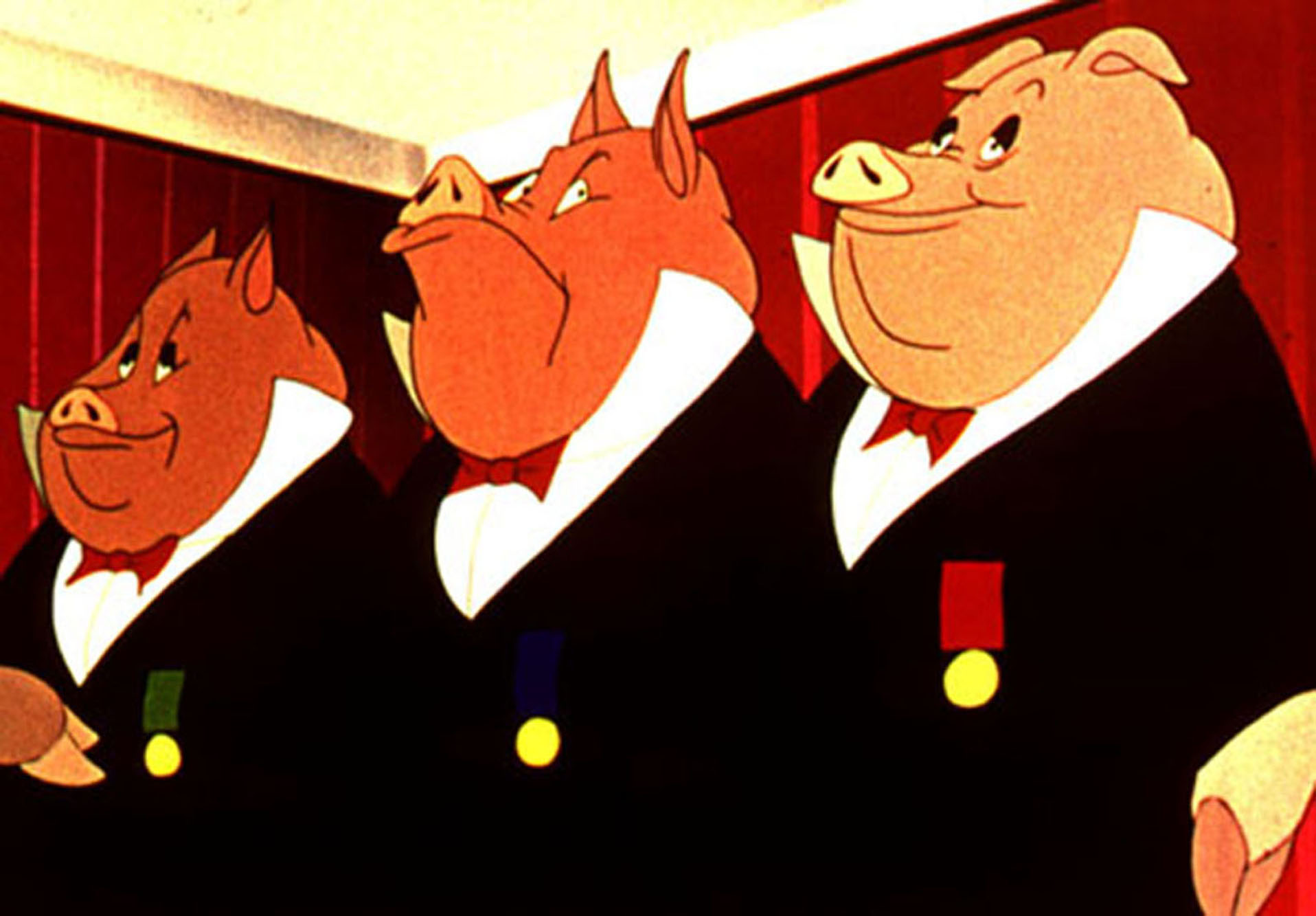More Public-spirited Pigs,Han Yi-seul-I (한이슬) Archives and Other News
On the Shelf

Eliot (not pictured) disapproves.
- As an editor at Faber & Faber, T. S. Eliot had the chance to publish Animal Farm. He declined. And he had sound porcine reasons for doing so, according to a newly digitized letter he wrote Orwell in 1944: “The positive point of view, which I take to be generally Trotskyite, is not convincing … After all, your pigs are far more intelligent than the other animals, and therefore the best qualified to run the farm—in fact, there couldn’t have been an Animal Farm at all without them: so that what was needed (someone might argue), was not more communism but more public-spirited pigs.”
- Memorial Day has only been around for about 150 years, meaning it’s not terribly old as far as memorials go. Consider instead the Bayeux Tapestry, which likely dates to the 1070s. Alison Kinney writes, “It’s a seventy-by one-half-meter length of linen panels worked in crewel, its madder-, mignonette-, and woad-dyed yarns still as vivid, after a thousand years, as the tints of the Art Nouveau comic strip Little Nemo… The medievalist Valerie Allen writes about the Bayeux Embroidery’s ‘dynamic things grounded in space and time,’ ‘from kitchen utensils to war gear … Objects acquire a kind of agency by exerting their inherent “virtue,” wearing down conventional distinctions between human and non-human to the point that a hand, a sword and a relic can all share in the same phenomenal luminosity.’ The Embroidery itself is just such a luminous agent: a war memorial—a Normandy Beach war memorial, no less. In this place occupied by hundreds of memorials, planned and incidental, fleeting and obdurate, from funerary sculpture to the bunkers that, after seventy years of coastal weather, still bear flamethrowers’ char marks, memorials develop unpredictable, unaccountable vibrancies that can shape the conflicts, even the topography, of later battles. That is, if they can first escape violence, neglect, and ordinary wear and tear.”
- Because your day needed the phrase intravaginal hardware for the pregnant bodyin it, here is Sasha Archibald on a thrilling development in consumer electronics: “A company in Spain recently released a new product, the Babypod. The device entails a small roundish speaker … The idea is to insert the speaker inside one’s vagina, like a tampon, and connect the auxiliary jack to an iPhone, from which the mother-DJ selects a playlist. The music is piped in directly where it can be heard best … Women have presumably always enjoyed the utility of an interior pocket, though no one has written this history. The nineteenth-century spirit medium Eva C. had a trick of producing ectoplasm from her vagina, and police report finding jewels and drugs, money and handguns, stolen phones and credit cards. In these cases, the vagina is treated as a secret lockbox—a hiding place no one will think to look, the corporeal equivalent of a buried treasure chest. The Babypod inhabits the woman in a totally different fashion. The very purpose of the device is to announce itself and broadcast sound. It makes the vagina speak. The Vagina Monologues didn’t need to get more literal, but they have.”
- While we’re in the vicinity of the genitals: “When reporters are forced to write about sportsmen kicking each other in the nuts, what do they write? This week has provided some answers … In ninety-six articles, totaling a little more than fifty thousand words, groinwas used 148 times across headlines, body and photo captions. Of course, in sports, groin injuries can mean something very different from your basic knee to the crotch. So at best, this creates unnecessary ambiguity in order to demur from coarser language. The next most frequently used was some form of below the belt with seventeen appearances, followed by nuts with fifteen, low blow with fourteen, a few variations of private parts totaling twelve, between the legs with ten, and ballswith nine.”
- There’s one last thing you need to do before the holiday weekend, and that’s to engage in a debate about canon formation with whomever is sitting nearby. As a launching-off point, consider this: “A great artist possesses both empathy and imagination: Many of Shakespeare’s female characters are as complexly nuanced as any in circulation today, Othello takes on racial prejudice directly, and Twelfth Night contains enough gender-bending identity shenanigans to fuel multiple drag shows and occupy legions of queer scholars … Although you’ve written that the English department ‘actively contributes to the erasure of history,’ what it really does is accurately reflect the tainted history we have—one in which straight white cis-men dominated art-making for centuries—rather than the woke history we want and fantasize about. There are few (arguably no) female poets writing in Chaucer’s time who rival Chaucer in wit, transgressiveness, texture, or psychological insight. The lack of equal opportunity was a tremendous injustice stemming from oppressive social norms, but we can’t reverse it by willing brilliant female wordsmiths into the past. Same goes for people of color in Wordsworth’s day, or openly queer people in Pope’s, or … ”


